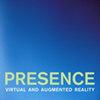基于虚拟现实的手部诊断与康复系统
IF 0.7
4区 计算机科学
Q4 COMPUTER SCIENCE, CYBERNETICS
引用次数: 28
摘要
本文描述了一种新的和统一的方法来计算机化的手部诊断和康复。该系统使用工作站自动收集和分析诊断数据,并评估康复进展。研制并试验了一种新型诊断手套。该装置测量施加于手部16个区域的抓握力。使用该系统的医生还可以利用现代诊断设备,如电子测力仪、测针仪和测角仪。此外,使用WorldToolKit图形库创建了三个VR康复练习,并在同一工作站上运行。这些练习是模仿标准的手部康复程序,包括操纵虚拟物体和透明的实时数据收集。用戴在病人手上的Rutgers Master对抓取力进行建模和反馈。使用Oracle数据库存储、分析和整合患者的诊断和康复数据。该系统目前正在进行临床试验。本文章由计算机程序翻译,如有差异,请以英文原文为准。
A Virtual Reality-Based System for Hand Diagnosis and Rehabilitation
This article describes a new and unified approach to computerized hand diagnosis and rehabilitation. The system uses a workstation to automate diagnosis data collection and analysis and to assess the rehabilitation progress. A new diagnosis glove was developed and tested. This device measures grasping forces applied to 16 regions of the hand. A physician using this system can also utilize modern diagnosis devices such as electronic dynamometer, pinchmeter, and goniometer. Additionally, three VR rehabilitation exercises were created using WorldToolKit graphics library and run on the same workstation. These exercises were modeled after standard hand rehabilitation procedures and involve manipulation of virtual objects and transparent real-time data gathering. Grasping forces were modeled and fed back using the Rutgers Master worn on the patient's hand. An Oracle database was used to store, analyze, and integrate the patient's diagnosis and rehabilitation data. The system is presently undergoing clinical trials.
求助全文
通过发布文献求助,成功后即可免费获取论文全文。
去求助
来源期刊
CiteScore
2.20
自引率
0.00%
发文量
8
审稿时长
>12 weeks

 求助内容:
求助内容: 应助结果提醒方式:
应助结果提醒方式:


